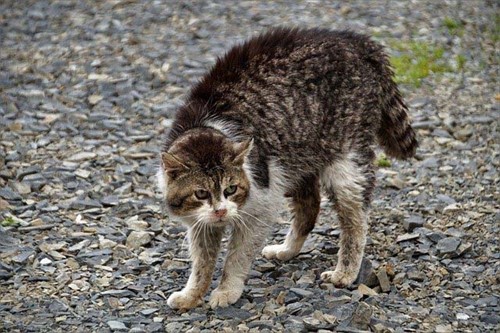We’ve all had goosebumps at some point, most of the time we can hazard a guess as to why they show up but sometimes we have no idea. Time to delve into the science behind goosebumps. Why do we get them? Do they serve a purpose? And what’s with that name?
What are goosebumps?
When we get goose bumps, the hairs on our arms, legs, or torso stand up. The hairs also pull up a small lump of skin, the hair follicle, with them. Usually, it happens when you are cold or something makes you emotional.
Goosebumps are caused by tiny muscles that tighten in the skin, causing the hair follicle to rise slightly. These skin muscles are activated by nerves of the sympathetic nervous system, the nerves that trigger the fight-or-flight response.
Why do we get goosebumps?
We have no control over when we get goosebumps and when we don't; it is an involuntary reaction. Usually, goosebumps are associated with unpleasant situations, such as when you are cold or scared. But there is more to it, as other things can also cause goosebumps. The sympathetic nervous system that causes goosebumps gets input from many parts of the brain, including those involved in motivation, arousal and emotion. This is why hearing music or seeing art that is particularly moving can give you the chills, as can feelings of awe, pride and excitement.

We are not the only animals affected by goose bumps. Many animals react similarly when they feel threatened, causing their fur to expand, making the animal look bigger and more dangerous. Porcupines, for example, expand their spines and cats expand their fur when they sense danger.
Straight up hair like in other animals may not be very useful to us when we feel threatened, but chicken skin still serves a purpose in humans, albeit perhaps not a very essential one. Goosebumps help us, and other animals, retain warmth when exposed to the cold. The contraction of muscles in the skin generates heat, raised hair follicles cause skin pores to close, and raised hairs trap a layer of air near the skin, retaining body heat.
Recent research has also linked chicken skin to the regeneration of hair and hair follicles, which can be seen as a longer-term response to the cold, at least in animals with fur. The nerves connected to the tiny muscles responsible for chicken skin are also connected to the hair follicle stem cells, which are responsible for hair growth. So when you get chicken skin, your hair follicle stem cells get the message to grow new hair.
Why is it called goosebumps?
Due to the hairs standing up with the hair follicle as a bump, our skin resembles that of a plucked bird. This is reflected in the name of the effect in many languages. In English they speak of goosebumps which can be translated as goose bumps, in German they use Gänsehaut or goose skin, and in Spanish it is called piel de gallina, or chicken skin just like ours. There is simply no escaping the similarity between the effect and the skin of a plucked bird.
Of course, there are also more formal, medical terms for goosebumps. Such as horripilation, piloerection, pilomotor reflex and cutis anserine. But even here we find references to plucked birds, as cutis means skin and anser means goose. Each of the medical terms describes a temporary change in the skin from smooth to lumpy, usually developed after exposure to the cold.


